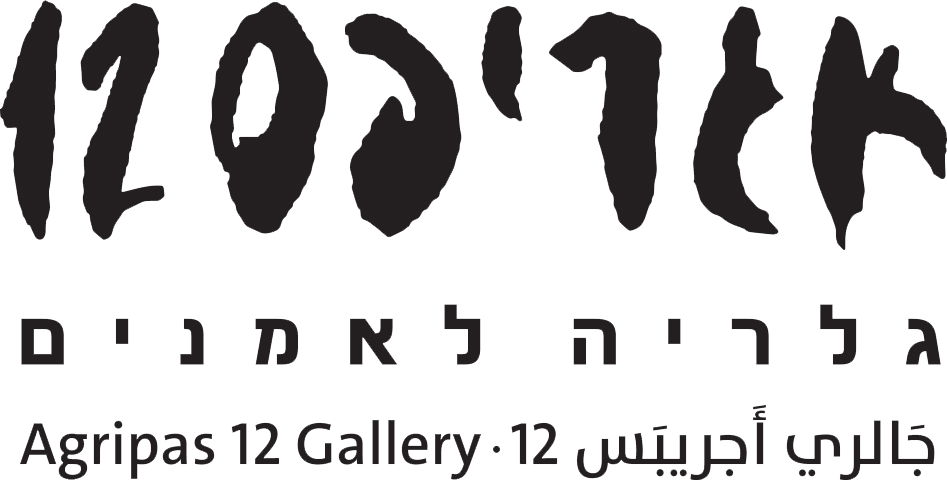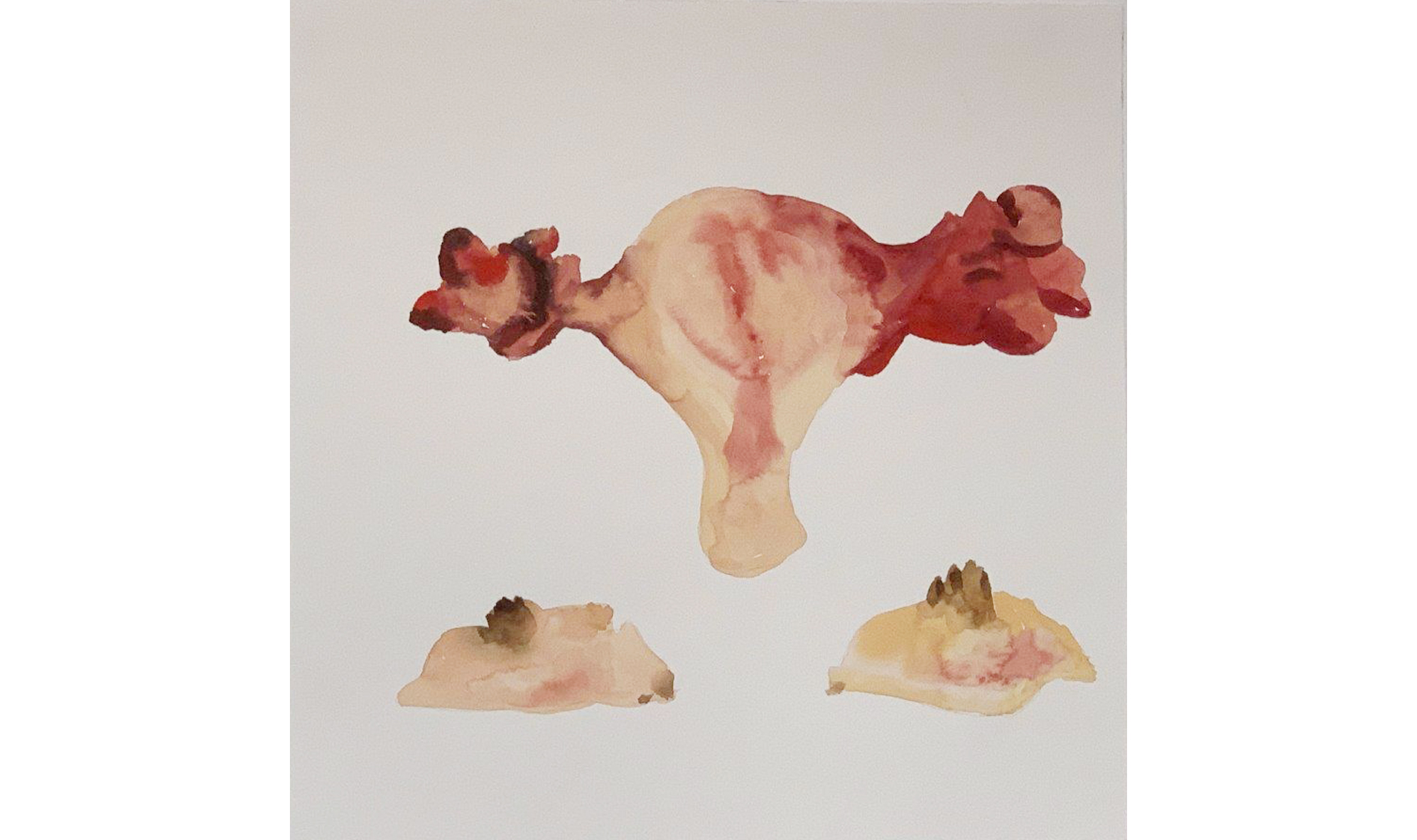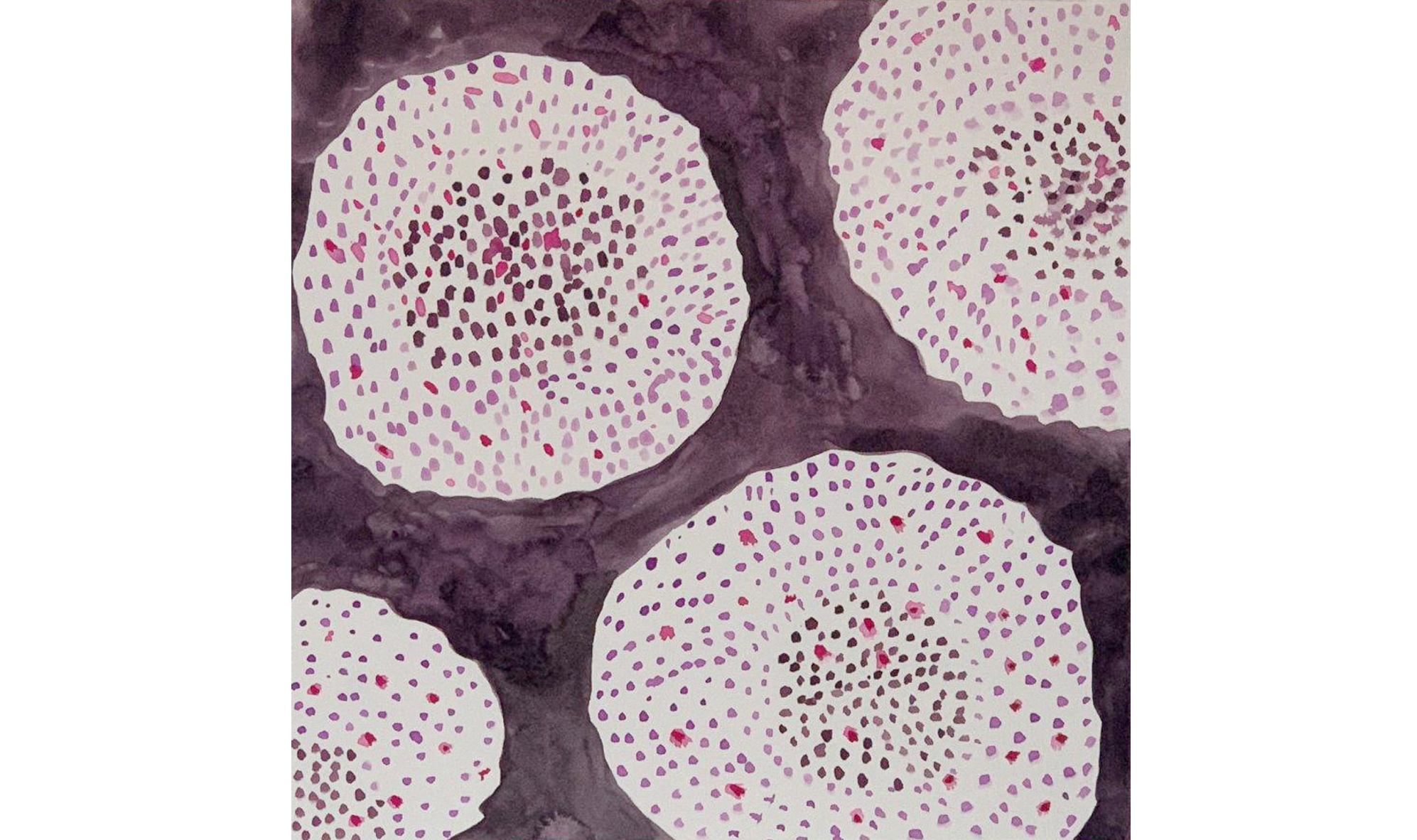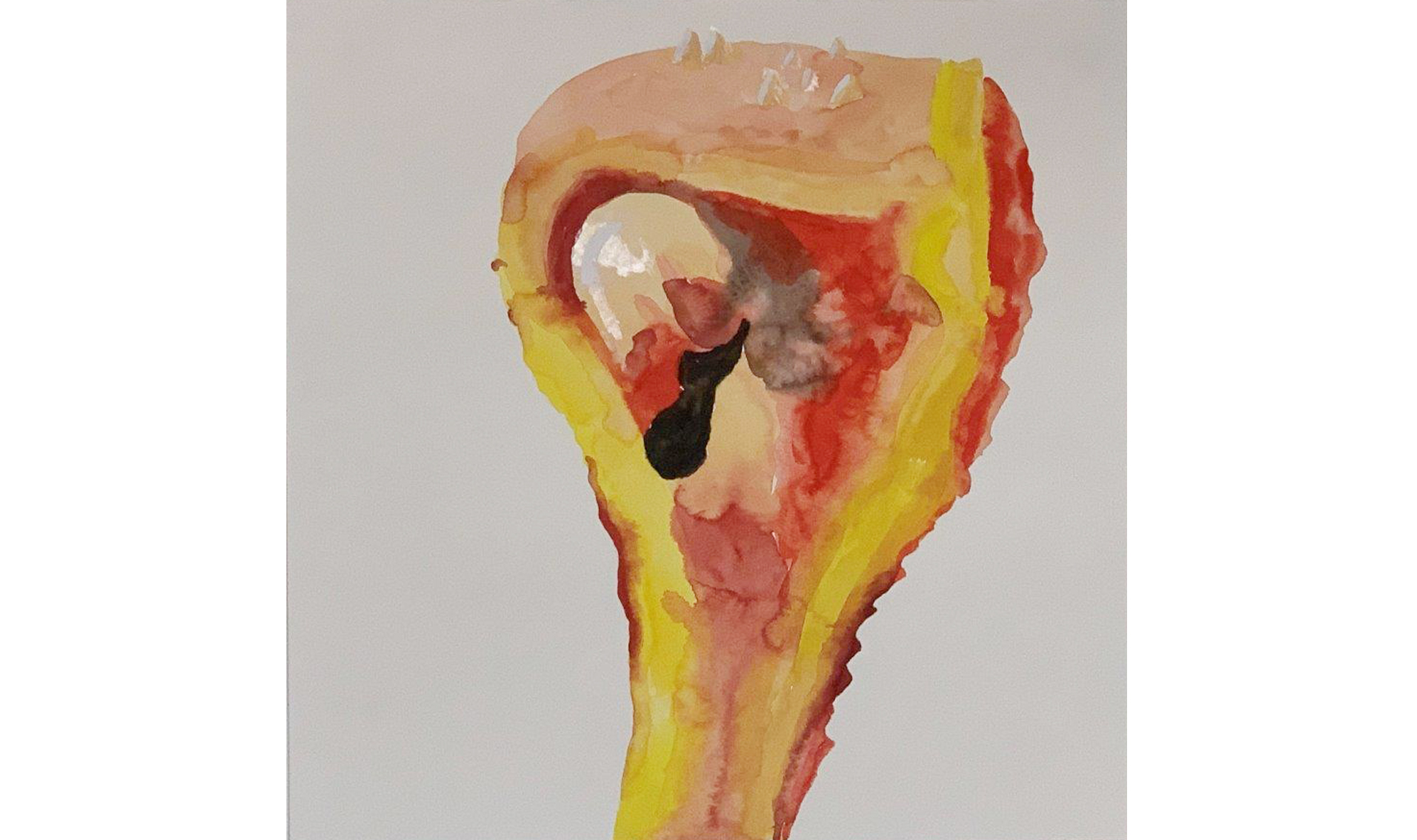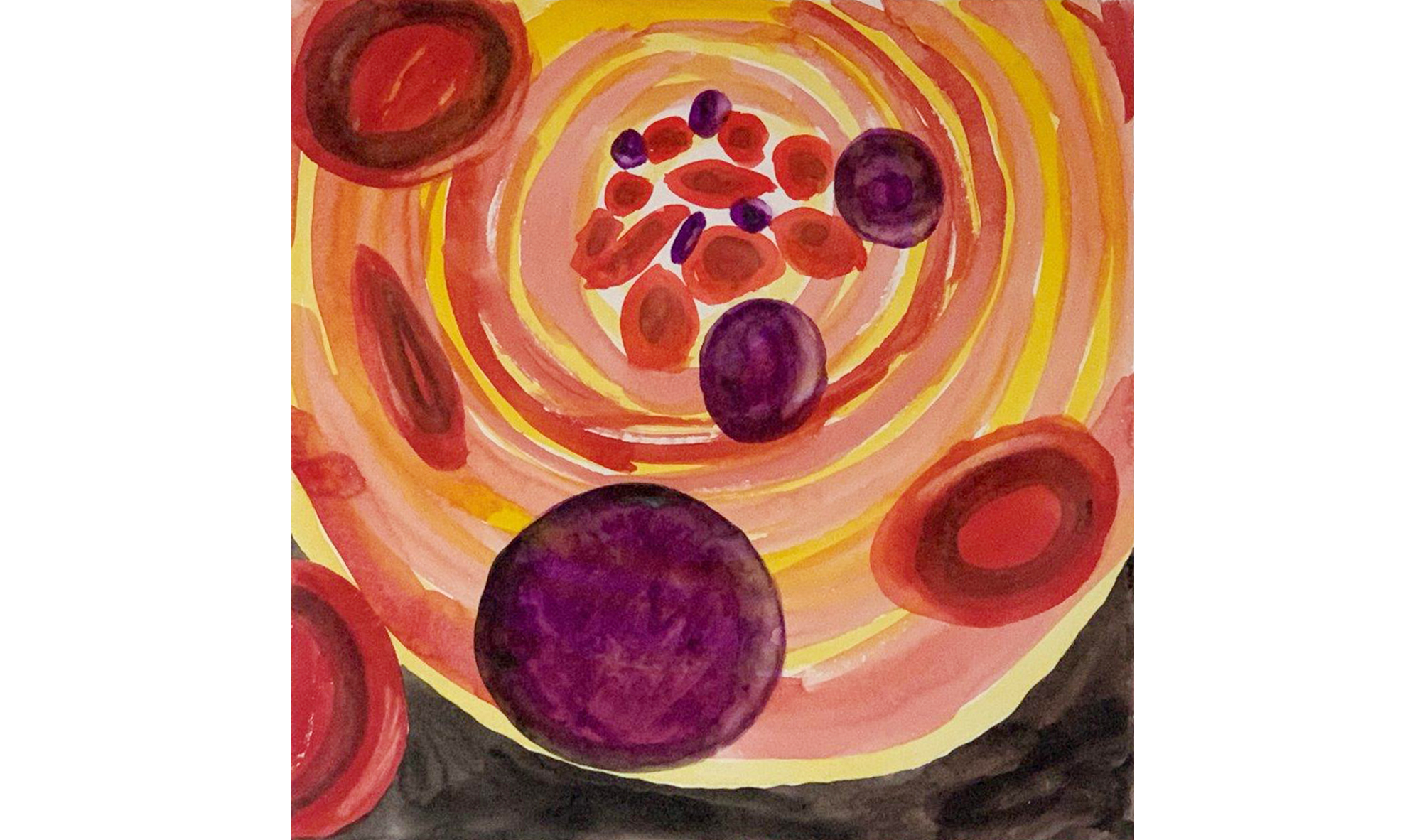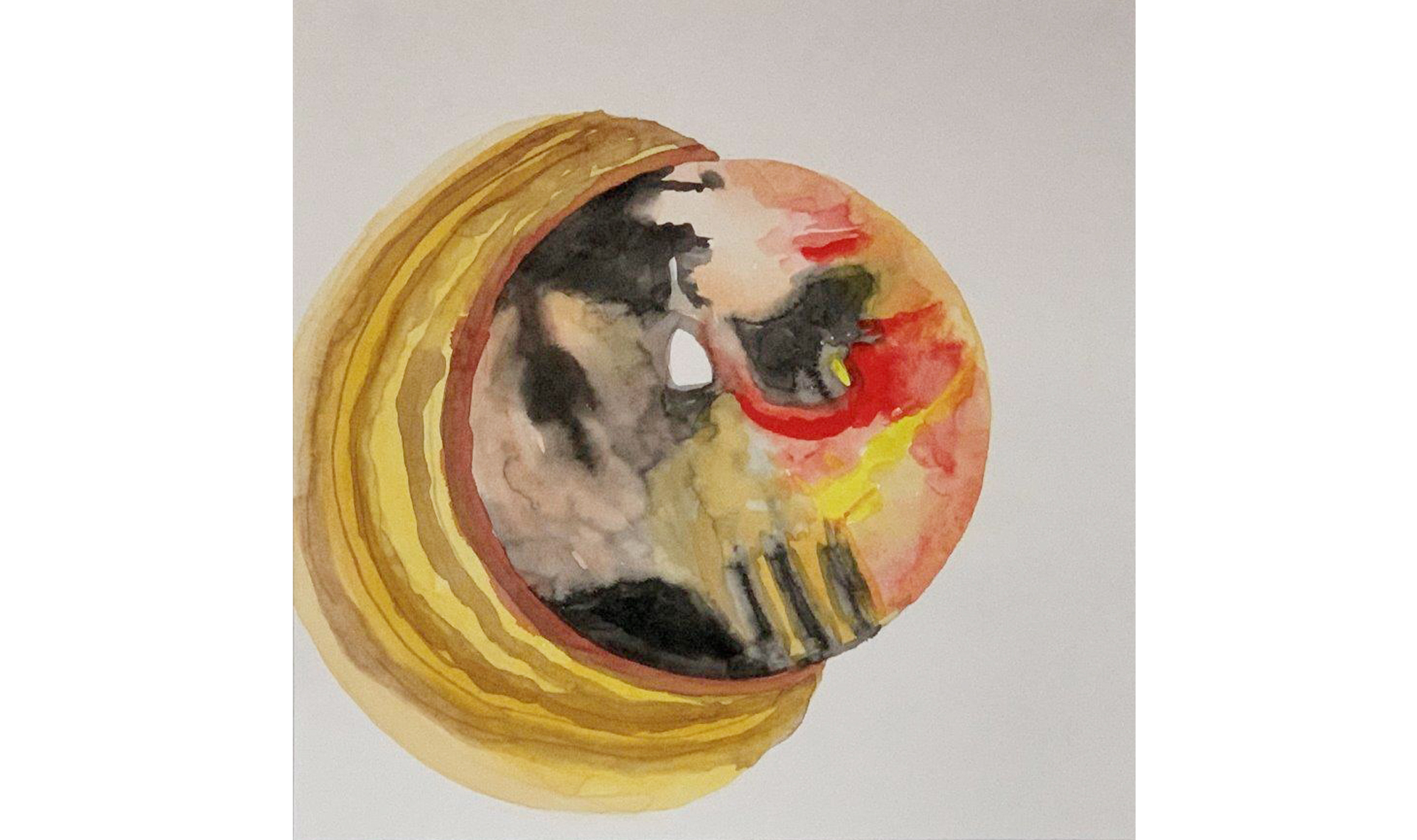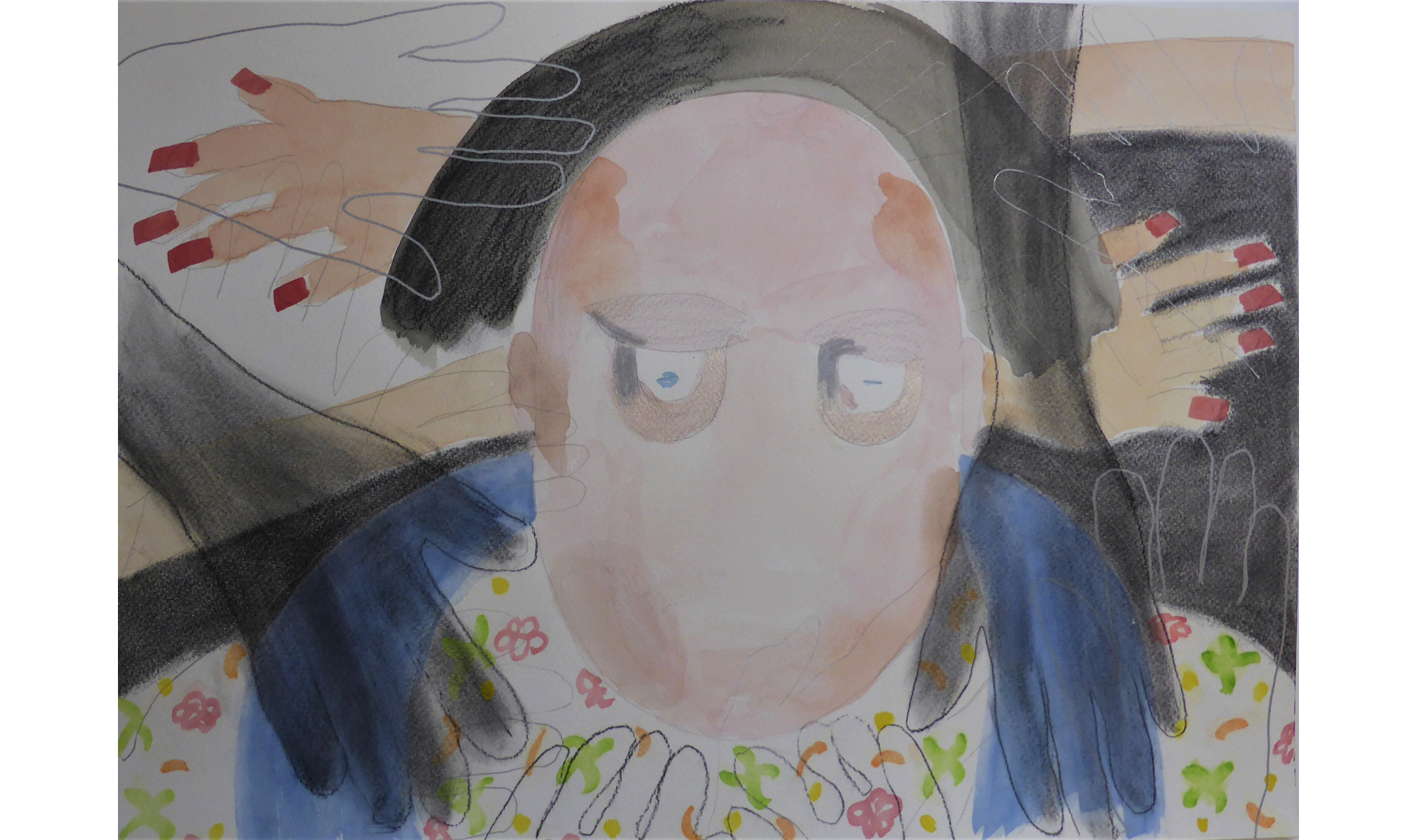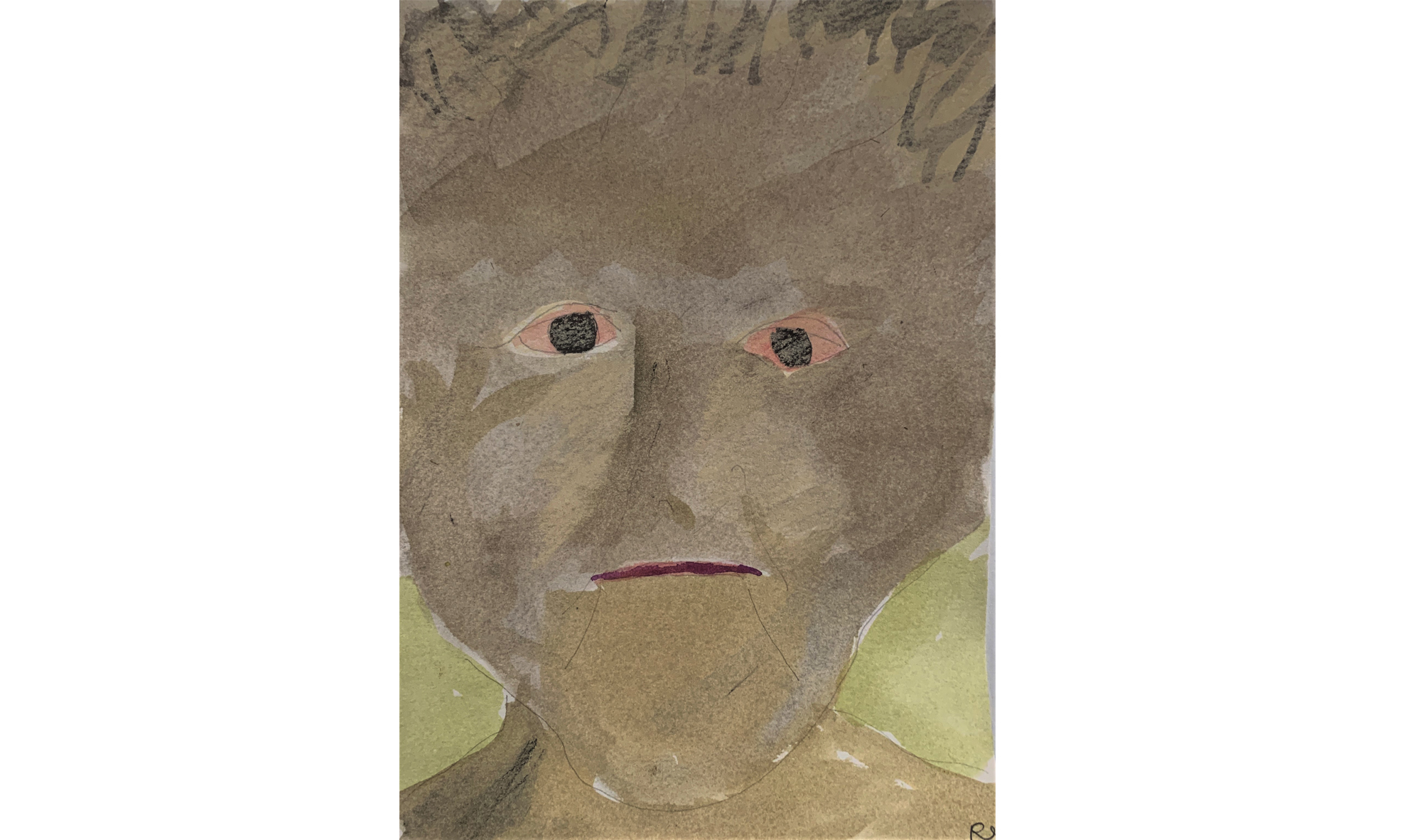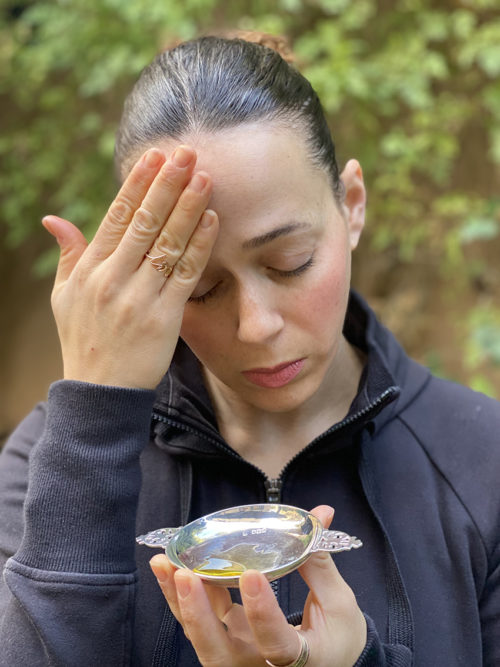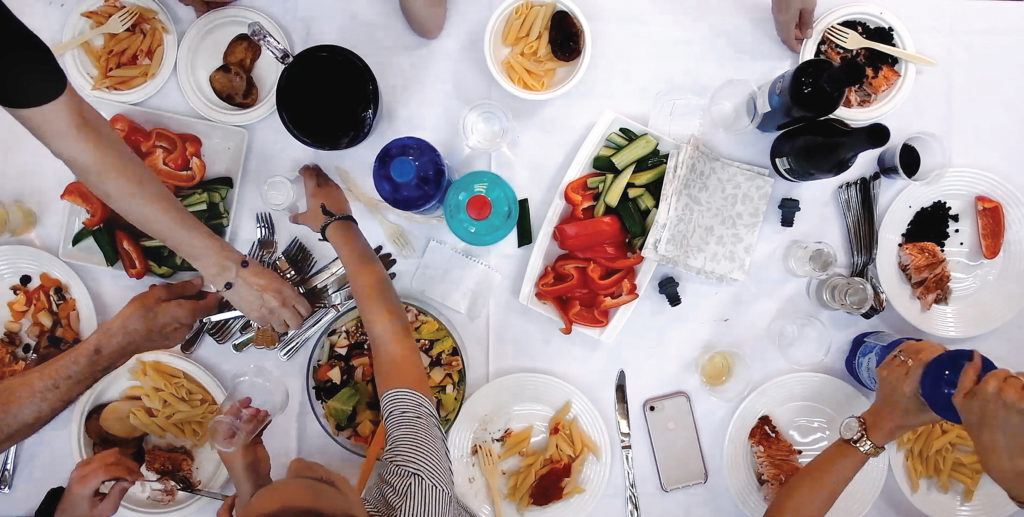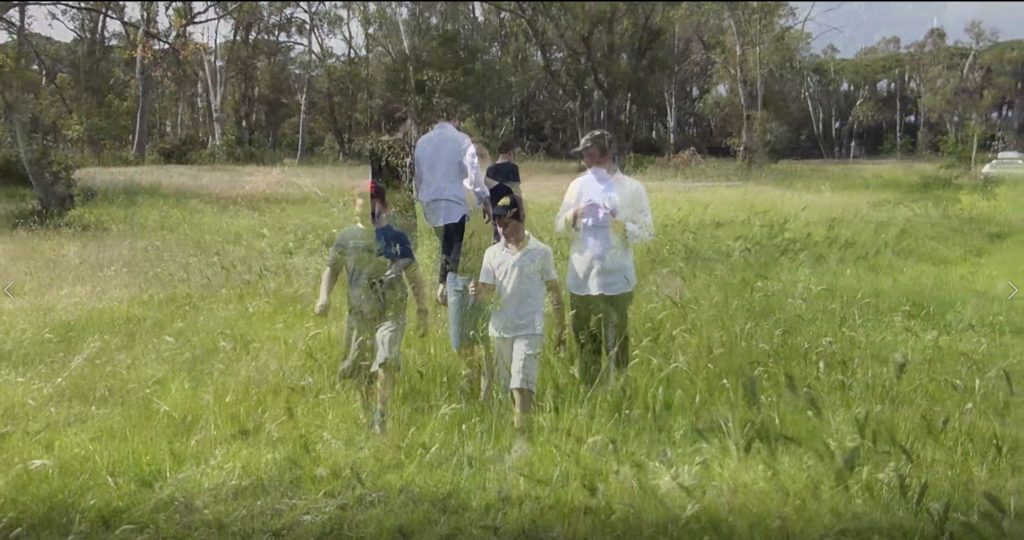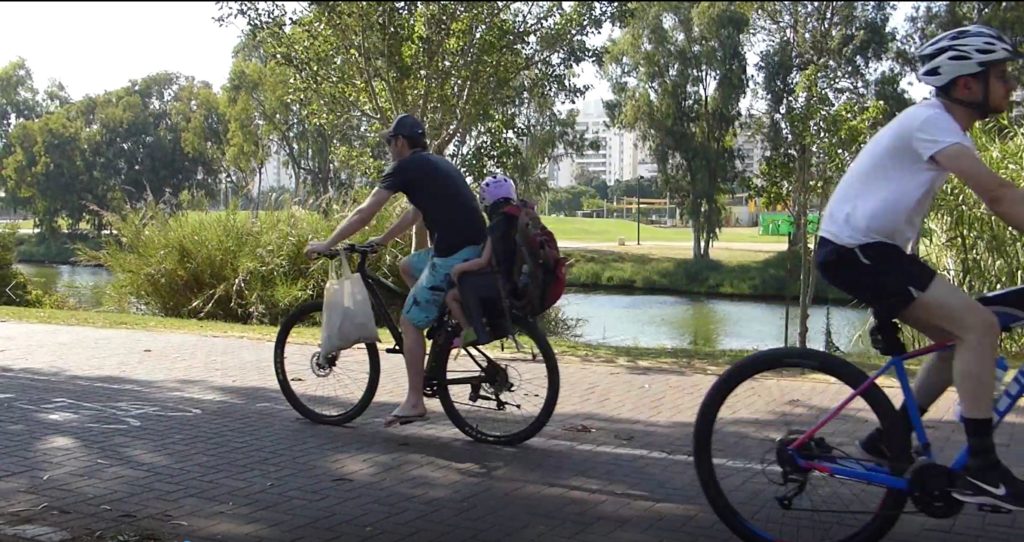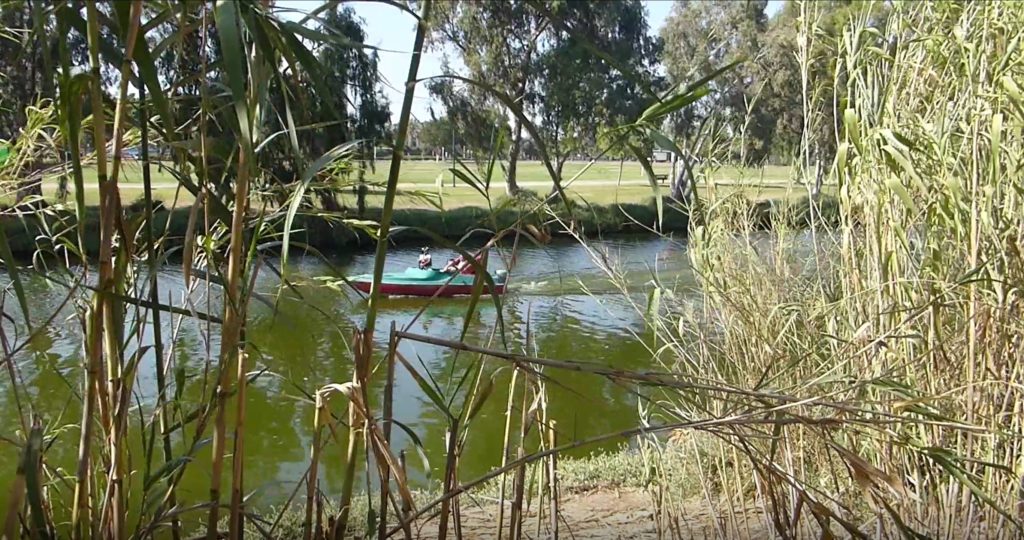
רות שרייבר, תערוך
אוצרת: בתיה רוזנק
פתיחה: 8.4.2022 | נעילה: 7.5.2022
טקסט באנגלית אחרי העברית
*הצילום למעלה: רות שרייבר, תערך לפני שולחן (פרט)
תערוֹך
רות שרייבר היא אמנית רב תחומית העוסקת בציור, פיסול, וידיאו ארט installation [=מיצב] ו-ready made. שרייבר מחוללת אמנות שמתווכת מחשבה, ביקורת ומחאה; יצירותיה והנושאים שהיא בוחרת לקוחים ממעגל החיים. היא מצויה בשיחה כאובה וקרובה למרחב היהודי-קהילתי-אורתודוקסי מודרני בו היא חיה. היא באה ממנו; היא תובעת אותו למחשבה והיא ממשיכה להיות משויכת אליו כמבקרת פנימית. עבודותיה בשנים האחרונות נוגעות בפמיניזם דתי בפרט ומגדר בכלל; זיכרון משפחתי, משפחות חדשות, לידה ומוות, ייסורים ובדידות.
האמנות היא הכלי ששרייבר חוקרת דרכו ומביעה את מחאתה כפניה לתיקון החברה. היא יוצרת מתוך הכאן ועכשיו; מחומרים שלקוחים מתוך החיים היום-יומיים. שימוש זה מאפשר את אותה זווית חדשה ומטלטלת שעבודתה מבקשת להעביר.
דוגמא מובהקת לחיבורים מורכבים אלה מגולם בעבודה קודמת של שרייבר – תערוכה וסרט שכותרתם: ״מהיכן באים ילדים לעולם?״(1). מקום האירוע: בית הכנסת האורתודוקסי מודרני רמב"ן. הדיון המושם מול המשתתפים: מבנה המשפחה החדשה – ובין היתר: זוגות להט״בים – ודרכי הבאת ילדים לעולם במשפחות אלו.
ממרחב ביקורתי ומטלטל זה מגיעה שרייבר אל תערוכה זו: ״תערוך״. ״תערוך״ צומחת מתוך המפגש האישי של שרייבר אם הכאב, המחלה, ההזדקנות והמוות של חברה קרובה. מתוך אלה היא יצאה ליצירתה, לאחר המפגש הכאוב עם חברתה שבתהומות האישיים הללו נתלתה מתוך אמונה עמוקה במזמור תהילים כג האומר כך:
מִזְמוֹר לְדָוִד ה' רֹעִי לֹא אֶחְסָר.
בִּנְאוֹת דֶּשֶׁא יַרְבִּיצֵנִי עַל מֵי מְנֻחוֹת יְנַהֲלֵנִי
נַפְשִׁי יְשׁוֹבֵב יַנְחֵנִי בְמַעְגְּלֵי צֶדֶק לְמַעַן שְׁמוֹ
גַּם כִּי אֵלֵךְ בְּגֵיא צַלְמָוֶת לֹא אִירָא רָע כִּי אַתָּה עִמָּדִי שִׁבְטְךָ וּמִשְׁעַנְתֶּךָ הֵמָּה יְנַחֲמֻנִי
תַּעֲרֹךְ לְפָנַי שֻׁלְחָן נֶגֶד צֹרְרָי דִּשַּׁנְתָּ בַשֶּׁמֶן רֹאשִׁי כּוֹסִי רְוָיָה
אַךְ טוֹב וָחֶסֶד יִרְדְּפוּנִי כָּל יְמֵי חַיָּי וְשַׁבְתִּי בְּבֵית ה' לְאֹרֶךְ יָמִים.
מזמור זה היה לחברתה עוגן במסע חייה האחרון. הוא היה מפלט ונחמה, מקור לצבירת כוח.
שרייבר אינה מוצאת מנוח מול המפגש בין המציאות הכאובה של המחלה לבין המציאות המעוצבת על ידינו בתהליך ייפוי העולם המאפשר לכולנו ״להמשיך הלאה״; הפער בין התקווה למציאות של האדם המאמין; הסדקים והשברים הניבטים בין האמונה והתקווה המגולמת במילות המזמור, לבין הבאנליות של היום יום. כל אלה מקבלים ביטוי ב״תערוך״.
״תערוך״ נוגעת ב״גיא צלמוות״. ואולם אלה הופכים מיסורים, חולאים, דימום וסבל לציורי אנטונמיה אסתטיים המביאים תקריבים של מחלות. יש כאן את אותם הדי ביקורת על הרפואה המודרנית, הסטרילית, המנתקת בין הגוף לבין הנפש. ההפרדה הקשה בין פרוצדורת הטיפול לסבל ומועקת המטופל המבקש מזור וגאולה. כל אלה זועקים מהאסתטיות של התמונות. הנתקים בין הנפש הסובלת לבין תמונת המחלה הנקייה היא אירונית ואבסורדית. תמונות נקיות ללא סיוט, ללא ייסורים, ללא חרדת הפרידה וכאב הבדידות. כאילו המחלה היא ברייה בפני עצמה.
מגיא הצלמוות נוטלת אותנו שרייבר לפסוקי ״נְאוֹת דֶּשֶׁא״, ״מֵי מְנֻחוֹת״, ״תַּעֲרֹךְ לְפָנַי שֻׁלְחָן״, ״דִּשַּׁנְתָּ בַשֶּׁמֶן רֹאשִׁי״ ו״כּוֹסִי רְוָיָה״. החלל השני של התערוכה מכיל מוצגים שונים חלקם וידאו-ארט המגלמים דברים אלו אך הפער בין האוטופיה של הפסוקים לבין המציאות הפשוטה, הבאנלית, מטלטל ומעורר מחשבה:
״נאות הדשא״ הופכים לדשא סנטתי מצוי – פלסטיק מגונה. אלמנט זה מזכיר את עבודתה של שרייבר הגן עדן״ שם כוסה קיר רחב ממדים בפרחי פלסטיק בהגשת גן העדן המזויף המגלמים יופי יומיומי פשוט המשולב באי נחת ואף שאט-נפש.
״מי המנוחות״ מקבלים ביטוי בסתם יום של חול על שפת הירקון הישראלי, ששרייבר בחרה דווקא בו, ושהוא מהנחלים הפחות מרשימים בעולם. ואולם אכן, היושבים שם מבטאים סוג של ״מי מנוחות״ ישראלי-עכשווי.
״תערוך לפני שולחן״ הוא עוד שולחן של ארוחה משפחתית, שיושביו מכלים את האוכל שעל השולחן במקצב המוטרף של בישולים ואכילה; הכנה וכילוי; סידור ובלאגן בנאלי, לכאורה.
״דישנת בשמן ראשי״ הוא בדיוק זה. הצילום הפשוט של שמן בקדקוד הראש. בפשטותו, בדומה לפרסומות לקוסמטיקה המוכרות לנו.
שרייבר אינה מוכנה לעטוף את החיים באידיאלים פנטסטיים. היא מורידה את השמים לארץ ומבקרת את הניסיון להפוך את דאבת הארץ לנקייה וסטרילית. יש כאב בארץ ונכון לראותו; הפנטזיה אינה יכולה להתעלם מהמצוי למטה.
ייחודה של ביקורת זו שהיא נעשית מתוך אהבה מורכבת. היא אינה שוברת את הכלים; היא מבינה את מלמול הפסוקים כנחמה עתידית כחוויה שאין לזלזל בה. ובאותה נשימה היא ריאלית ואינה מוכנה לקישוטים פנטסטיים.
יצירתה של רות שרייבר היא עוד ביטוי עז ליצירתה המתמשכת והעמוקה שמפגישה את הרוח עם החומר; את הבאנליות עם התקווה למשהו שהוא מעבר התלוי בחיוכה של נשמה. בדומה ליצירתה משנת 2011, Kosher, Kosher, Kosher המתארת באופן חריף ומעודן, את הכנתה לטבילה של אישה. הכנה זו נעשית על כל פרטיה; מתוך ביקורת אך גם אהדה אנושית, רוח ״המתפרקת״ או מתפרטת לחומר פשוט פשוט; ולבסוף חיוכה של אותה אישה ״כשרה״ – שלא ברור מה עומד מאחוריו: אושר או הצגה.
פתיחה לדיון על החיים באמת.
בתיה רוזנק, אוצרת
1. באתר https://www.youtube.com/watch?v=-jynFSe7y1E
2. באתר https://www.youtube.com/watch?v=RlZ6jgNFe4k
Ta’arokh – Prepare
Ruth Schreiber is a multidisciplinary artist who creates painting, sculpture, video art installations and ready-mades. Schreiber’s thought-provoking work inspires criticism and dissent, with themes derived from the cycle of life. Her discourse within her own environment, the modern orthodox Jewish community, is close and painful. She is a product of this space, and she continues to challenge it from within. Her projects in recent years have addressed gender in general, and religious feminism in particular, as well as familial memory and new structures, birth and death, anguish and loneliness.
Schreiber uses art to study and express protest as a means towards social reform. She creates in the here-and-now, using ordinary everyday materials, and illuminates a new and jarring perspective through her art.
One example of these complex connections is expressed in an earlier project by Schreiber, comprising an exhibition entitled Where do Babies Come From? The event took place in the Ramban modern orthodox synagogue in Jerusalem, and was attended by members and guests. The discourse centered on the structure of the new family, particularly LGBT couples, and what it takes for them to have a child.
Schreiber’s current exhibit, Ta’arokh: Prepare, materializes out of this critical and discomforting space. Prepare emerges partly from Schreiber’s own encounter with pain: coping with the illness, aging and death of a close friend. Her work reflects this experience, and emerges from a challenging meeting with her friend, who found profound faith in Psalm 23:
A Psalm of David: The Lord is my shepherd; I shall not want.
He makes me lie down in green pastures; he leads me beside still waters.
He restores my soul; He leads me in right paths, for the sake of his name
Even though I walk through the valley of the shadow of death, I will fear no evil; for you are with me.
Your rod and your staff – they comfort me.
You prepare a table before me in the presence of my enemies; you anoint my head with oil; my cup overflows.
Surely goodness and mercy shall follow me all the days of my life, and I shall dwell in the house of the Lord my whole life long.
Schreiber is uneasy with the intersect between the agonizing reality of illness and pain, and the beautification of the world that enables everyone ‘to move forward’ – the space between optimism and the world of the believer; the cracks and breaks between the faith and hope expressed in the psalm, and banal everyday life. All of these are powerfully expressed in Prepare.
Prepare touches on “the valley of the shadow of death,” turning torment and illness, bleeding and suffering – into aesthetic anatomical close-ups of disease. There is an echo of critique on the sterility of modern medicine, which creates a disconnect between body and soul; also a harsh separation between the treatment procedure and the distress of the patient who requires relief and redemption. These echo from the aesthetic of the images. The disconnect between the suffering soul and the cold images of the disease are ironic and absurd. The clean representations contain no pain, no nightmare, no parting anxiety, and no anguished loneliness – as though the illness is a separate being.
Schreiber explores the images of the valley of the shadow of death, green pastures, still waters, You prepare [ta’arokh] a table before me, You anoint my head with oil, and my cup overflows. The larger room of the exhibition, through various displays including video art, highlights the jarring and thought-provoking differences between the utopia of the verses and banal reality:
Green pastures are represented by ordinary synthetic grass, made of plastic. This element is reminiscent of Schreiber’s Garden of Eden – a large wall covered with plastic flowers, expressing the falsity of the Garden of Eden, conveying the disquieting integration of simple everyday beauty and repugnance.
Still waters: a regular day on the Yarkon riverbank – chosen by Schreiber despite the fact that it is one of the least impressive rivers in the world; nonetheless, those who sit at the riverbank express a current Israeli approach to still waters.
You prepare [ta’arokh] a table before me: a table set for yet another family dinner, whose attendants devour the food on the table in a crazed rhythm of cooking and eating; preparation and elimination; organizing and disorganizing.
You anoint my head with oil is the straight-forward series of images of a face anointed with oil.
Schreiber is not willing to ensconce life in idyllic fantasy. She brings Heaven down to earth and critiques the attempt to turn earthly pain into something clean and sterile. Pain is here, and needs to be seen; fantasy cannot ignore what is present on earth.
This analysis is unique because it is intermingled with a complicated love: it does not conclude with an abandonment of the source. The recitation of the verses is perceived as a future comfort – an experience that should not be marginalized; but at the same time, it is painfully realistic, and will not stand fantastical embellishment.
Ruth Schreiber’s work is a fierce expression of her deep ongoing artistic coupling of spirit with matter; banality with hope for something more – for soulful satisfaction. A similar effect was achieved in her 2011 work, Kasher, Kasher, Kasher, which combined harshness and delicacy in the description of a woman’s getting ready for immersion. The meticulous preparation is depicted with both criticism and empathy: portraying a spirit which is dissected into details of simple matter, culminating in the smile of a now-pure woman, a smile that may be deciphered as pure joy or performance.
This is the introduction to a discussion about real life.
Bitya Rosenak, curator
1. Postmodernism is a phenomenon irreversibly deteriorated towards what the author calls Posthumanism. Neosentimentalism is the suggested alternative to the growing anti-humanist trend, and turns to the ‘human.’ (Read Michel Houellebecq “The Possibility of an Island”).
2. Classic Sentimentalist artists: Jean-Baptiste Chardin, Anne Vallayer-Coster, Jean-Etienne Liotard, Thomas Gainsborough, Elisabeth-Louise Vigee-Le Brun, Richard Brompton, Jean-Baptiste Greuze, Thomas Jones and many others.
3. Neo-Sentimentalist artists worldwide: Damien Hirst, Jeff Koons, Yayoi Kusama, Kiki Smith, Yinka Shonibare, Liliana Porter, Jessica Jackson, Beth Katleman, Vered Aharonovich, Shay Azulay and many others.
